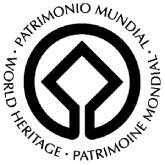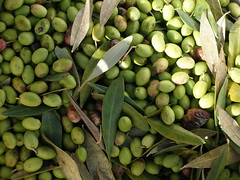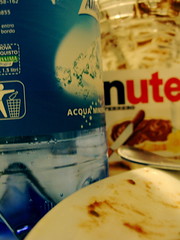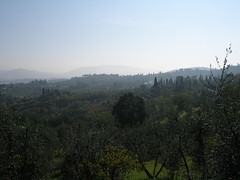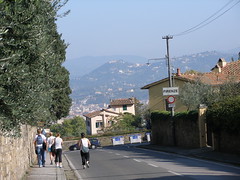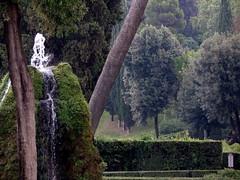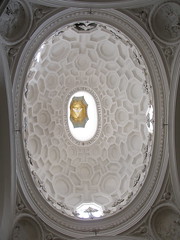On being alone and importance of PlaceSometimes one must go into the depths of one’s self to come back out again refreshed.
Since writing and posting the entry “a dark room with no walls”, I’ve had time to reflect and consider my words, thoughts, experience, and the world they fit into. I must admit, that entry was very personal, and some may consider it too personal for this space; but I’ll contest that as part of my “wayfinding” journey it has been quite helpful.
In reflection, I was writing mostly about the feeling of loneliness and my personal acceptances of it—or rather, my process of becoming comfortable with being an individual in a very big world. It happened for me while I was at the Magic Fountain in Barcelona, surrounded by people I didn’t know. I realized in that moment that I was entirely alone, but surrounded by so many people. And it was this irony of being one amongst others that struck me. The experience freed me from anxieties about alienation and loneliness and brought me further into the world.
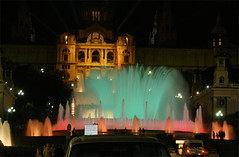
While I was no longer scared of being alone, the recognition of my self as an equal self among the immense and vast number of selves in the world (each respectively as individual and particular as my own), led me to separate my self from my thoughts of others. While I sat on the steps of Montjuic and watched the changing lights and water dance to classical music, I thought: “you’re here by yourself, enjoy this great moment, and stop feeling sorry that others can’t experience this! Take no photos! Take a look around, you’re actually alone!” But when I looked around I found that I was alone but surrounded by people. I was alone, but then again, in that Place, I was not really alone.
I believe the sense of comfort from being alone—that transformation of “loneliness” to “comfort” that I experienced in my last night in Barcelona—was actually due to the Place I was at. I was alone but surrounded by many unknown people. And the Place became the “transistor” of human support.
In that moment I knew I no longer needed to worry about becoming alone because I realized that no matter where I am in the world I am not alone. I am separate as an individual but will always be surrounded by people. (To put it bluntly, we all live on the same planet.) And it was a successful Place—for me, the Magic Fountain in Barcelona—that was the “transistor” (the transferring medium of humanness) that connected me to the unknown people I was surrounded by. I no longer needed to worry about alienation and loneliness, about wishing friends and family back home could experience this with me. I no longer needed to comfort myself with these thoughts because the Place set me in rhythm with my human environs.
In further reflection, when I walked away from the Magic Fountain in Barcelona, I not only walked away with a revised sense of independence, but also a little bit of cynicism. I walked away without a fear of being alone. But I also walked away thinking I didn’t need to care about what anybody though about me, or anything. “Whatever, ‘bo’”, I thought to myself. I was alone and therefore so was everybody else... so who cares...
Coming into comfort with being physically alone is a two-way street. One can find comfort in themselves within a big world. One can also find one’s being alone to mean there actually is no responsibility between oneself and that big world.
And the later is which I feel—in combination with places in communities that don't act as “transistors” of humanness—breeds alienation, loneliness, and cynicism in many of today’s Western Youth.
I came away from my experience at the Magic Fountain experiencing both independence and cynicism. And in considering my last major blog entry, they both reflect. But it is important to move beyond the cynicism and acknowledge the places we live in and experience, their powers to change us, and the nature of human relationships that are formed through places.
What I had felt and called “loneliness” became the emotion of “comfort” because it was in my state of being alone that I found comfort. And it was the Place around me that took the form of, like what one uses the architecture of a church and temple for, connection, freedom, sustenance, and evolution of the human spirit.
. . .
Apathy and AmericaOne of the benefits of studying abroad with Syracuse University in Florence (and there are many) is being able to meet students from many different American universities. Studying abroad here is like having graduated, gone to a new school, a new life, and getting a chance to see what life is like for many different people. I’ve met many amazing people from all around the world, and many with views that have challenged me.
Two months ago I had a conversation with two students who had a very different view of the world than I. To them, in order to have “people at the top” there must always be “people at the bottom”. They told me that children must always be dying, people must always be starving, and wars must happen in order to allow other people to have success, great lives, and be happy.
I’m stubbornly optimistic and utopian, so to hear such a (in my opinion) pessimistic, cynical outlook really bothered me. I held my breath, swallowed, and asked them to tell me more about their perspectives. “That’s just the way it is”, they told me. “You can’t change the world, and why would you want to? People must always suffer for others to be successful.”
“But that’s not true,” I responded. “Why can’t we strive to help everybody in the world to feel happy and good about themselves, their communities, and their lives?”
While working as Primary Contact Student Representative on the UCSC
2005 Long Range Development Plan (LRDP) Committee, I encountered a
wide variety of views on the future of UCSC, Santa Cruz, community, environment, place, people, life, and the world; many contrasting, many diverse, and all very interesting. My approach as student representative was to always
bring the diverse opinions into dialogue.
But, if there was any view that bothered me, it was apathy. Like a pimple that just won’t go away, it is bothersome. A view that the world, the future, everything, is “just the way it is” and that it is “pointless” to even consider trying to change things.
I must admit, the sense of being alone without connection to others experienced in-part at the Magic Fountain reminds me of this American apathy... the idea that as independent, one has no connection to others and the world.
(An aside: At UC Santa Cruz, I encountered apathy sometimes when trying to discuss the importance of understanding that things, people, systems, places, the University of California as a matter of fact, all take a long time to change. And that one must respect time and plan with the long-view... that the long-range
part of the Long Range Development Plan is really important… that real change does not happen over-night… that real change is a process involving many complex factors.Apathy is also a very real problem within the University of California system among a fair amount of students, especially whites and middle to upper classes. See the University of California Undergraduate Experience Survey and SERU21 Project for more information. Both these projects were presented at the UC symposium on "Civic and Academic Engagement in the Multiversity", of which I participated, in June 2005.)
. . .
Global GuideAmericans (including myself) have an interesting relationship to this whole “apathy” and “cynicism” thing.
Time and time again, here in Italia, I am struck by the commonness and causualness of American
pop music,
brands,
sports,
technology,
food,
etc. within the marketplace and consciousness.
While riding the Eurostar down to Rome last weekend I happened to sit next to a very nice Italian man, a professor and an activist with
WWF. We conversed in Italian about many issues, sustainability, the environment, globalization, national parks in Italia (in particular an amazing
park in Sardegna, outside Cagliari), Italian cities, differences and similarities between the USA and Italia, and popular culture.
He said that many Italian youth prefer to listen to their pop-music, prefer to just go out and have fun… bob their heads to the beats and go, “bo.” I had in my lap my little portable radio; he smiled and pointed to it—“you, too?” No, I use the radio to listen to Italian music, to try and pick up as much Italian language and culture as I can. Not an
ipod, “a portable radio!”, I joked.
I asked him about the predominance of American and English-language pop music on the radio. To me it all seems so strange to hear so much of it when sifting through radio stations. In the USA, aside from the Spanish-language radio stations—which are a minority compared to the rest—everything is in English. It is difficult to imagine what it would be like to be Italian, think and know Italian, but to hear so much pop music in a foreign language. My new friend said it’s always been that way: for him it was the Beatles.
America and the English-language produces the most played-out, globalized, popular culture. And this is just the surface,
but a surface people like to look at. While the global relations between nations are shifting, America is still a source of guidance to other countries.
This past week I attended a lecture on the trans-Altantic relationship of the USA and EU Nations. History Professor Federico Romero of the University of Florence noted that while anti-American sentiment is extremely high (especially in Western European nations), EU nations politically, economically, and strategically still look towards the United States for advice and as an example to follow. Generalizations (though rooted in real actions) such as: Americans are “war-mongers”, “fabricated the war-on-terror to take control of oil and power”, “are egotistical”, “are anti-Islamic”, “don’t give a rat’s ass about Europe”, can still be followed with, “...well, USA is still very, very powerful, so we need to look towards them for guidance.”
And that’s the reality. Despite changing global relations and the stupid things the current American government says and does, the USA is still very powerful and influential. Europe looks to the USA for advice, and so does China, and India, and many other nations... why? Because people in China say "I want music, cars, and houses like those Americans". And China is trying to satisfy those desires, trying to give its population what Americans have had.
(An aside: China's interests have repercussions economically around the world. Currently Africa is being hit very badly, but soon it is likely to be Europe. This has to do with local/national industries not being able to compete with the cheapness of Chinese products that are produced with such a small labor cost.). . .
With many Youth growing-up and choosing their recognition of independence in the world to mean a disconnection from others and the world (via apathy and cynicism), America needs to recognize its
own Place and
set an example.
And with nations looking towards the USA for guidance on how to live, Americans should share with the world places, people, policy, products, and ideas that help people gain independence
, and an understanding of our global togetherness.
Like my personal experience at the Magic Fountain in Barcelona, we are all alone--all individuals--yet all sitting together, on
Earth.

